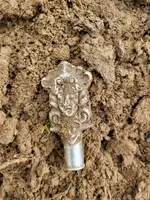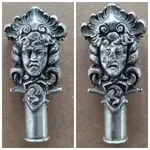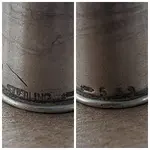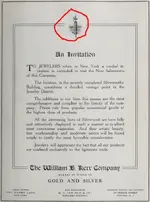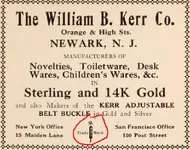See my post (#7). It is a Kerr piece, but those trademark dates are incorrect and tell an incomplete story. Wiki has the same dates in the Kerr company history, but there is no attribution for the information. I think this dating misconception arose from the fact that the company registered a new trademark on 29th March 1892,
but they also carried on using the old one (the fasces: an axe wrapped in a bundle of wooden rods) for some time after that. Also, pieces carrying the word “STERLING” in addition to the trademark won’t be as old as 1855. They’ll be post-Civil War and usually not before 1868 when America began to embrace the sterling standard.
The fasces trademark continued to be used after 1892 until Kerr’s death in 1906, and then beyond that when the business was owned by Gorham who continued to run it as a separate division until 1927, using the same name. The trademark was clearly used well into the period of Gorham ownership and perhaps all the way through to the business being fully absorbed.
Here's a 1910 invitation and a 1917 advertisement, both with the fasces trademark. Although Kerr pieces aren’t datemarked, here’s one which has a personalised inscription with an April 1914 date (I’ve edited the two marked areas together in the picture).
View attachment 2051544 View attachment 2051545 View attachment 2051546
Kerr pieces usually need to be dated from their style/pattern (the numbers don’t help much since they’re poorly documented). Pieces with the Medusa invariably get sold as “Art Nouveau” because that’s a hot phrase but Kerr were making Baroque pieces with the ‘green man’, the Medusa, serpents, cupids and such before the art nouveau period “proper” began around 1890. This would certainly be “Belle Epoch” (post 1870) and perhaps just into the art nouveau period of the 1890s (my opinion).



